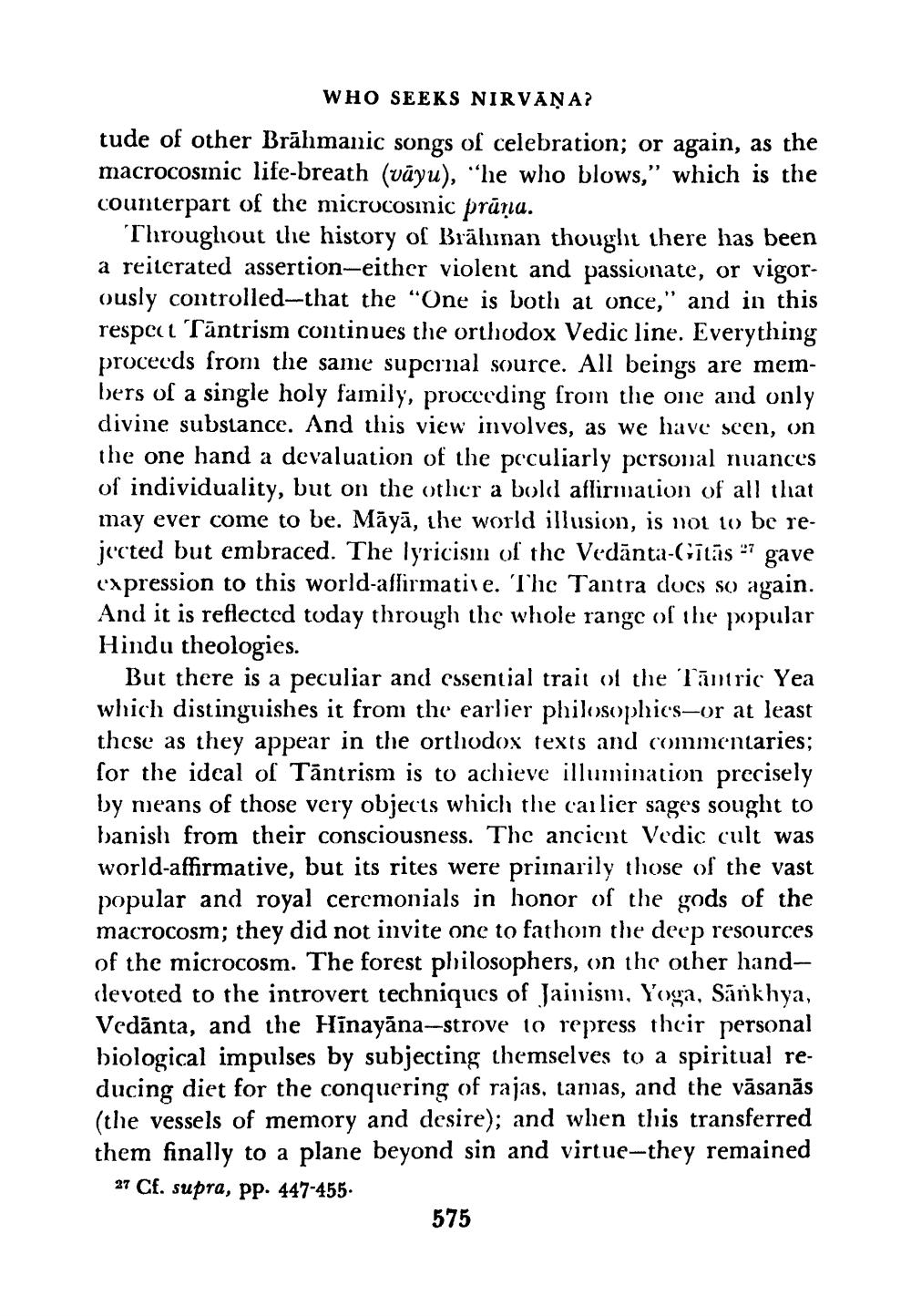________________
WHO SEEKS NIRVANA?
tude of other Brāhmanic songs of celebration; or again, as the macrocosmic life-breath (vāyu), "he who blows,” which is the counterpart of the microcosmic prāņa.
Throughout the history of Brähuman thought there has been a reiterated assertion-either violent and passionate, or vigorously controlled-that the "One is both at once," and in this respect Tāntrism continues the orthodox Vedic line. Everything procecds from the same supcrnal source. All beings are members of a single holy family, proceeding from the one and only divine substance. And this view involves, as we have seen, on the one hand a devaluation of the peculiarly personal nuances of individuality, but on the other a bold aflirmation of all that may ever come to be. Māyā, the world illusion, is not to be rejected but embraced. The lyricisin of the Vedānta-Gītās 7 gave (xpression to this world-affirmative. The Tantra does so again. And it is reflected today through the whole range of the popular Hindu th
But there is a peculiar and essential trait of the Tantric Yea which distinguishes it from the earlier philosophics-or at least these as they appear in the orthodox texts and commentaries; sor the ideal of Tāntrism is to achieve illumination precisely by means of those very objects which the cailier sages sought to banish from their consciousness. The ancient Vedic cult was world-affirmative, but its rites were priinarily those of the vast popular and royal ceremonials in honor of the gods of the macrocosm; they did not invite one to fathoin the deep resources of the microcosm. The forest philosophers, on the other hand, devoted to the introvert techniques of Jainism, Yoga, Sankhya, Vedānta, and the Hīnayāna-strove to repress their personal biological impulses by subjecting themselves to a spiritual reducing diet for the conquering of rajas, tamas, and the vāsanās (the vessels of memory and desire); and when this transferred them finally to a plane beyond sin and virtue-they remained 27 Cf. supra, pp. 447-455.
575




